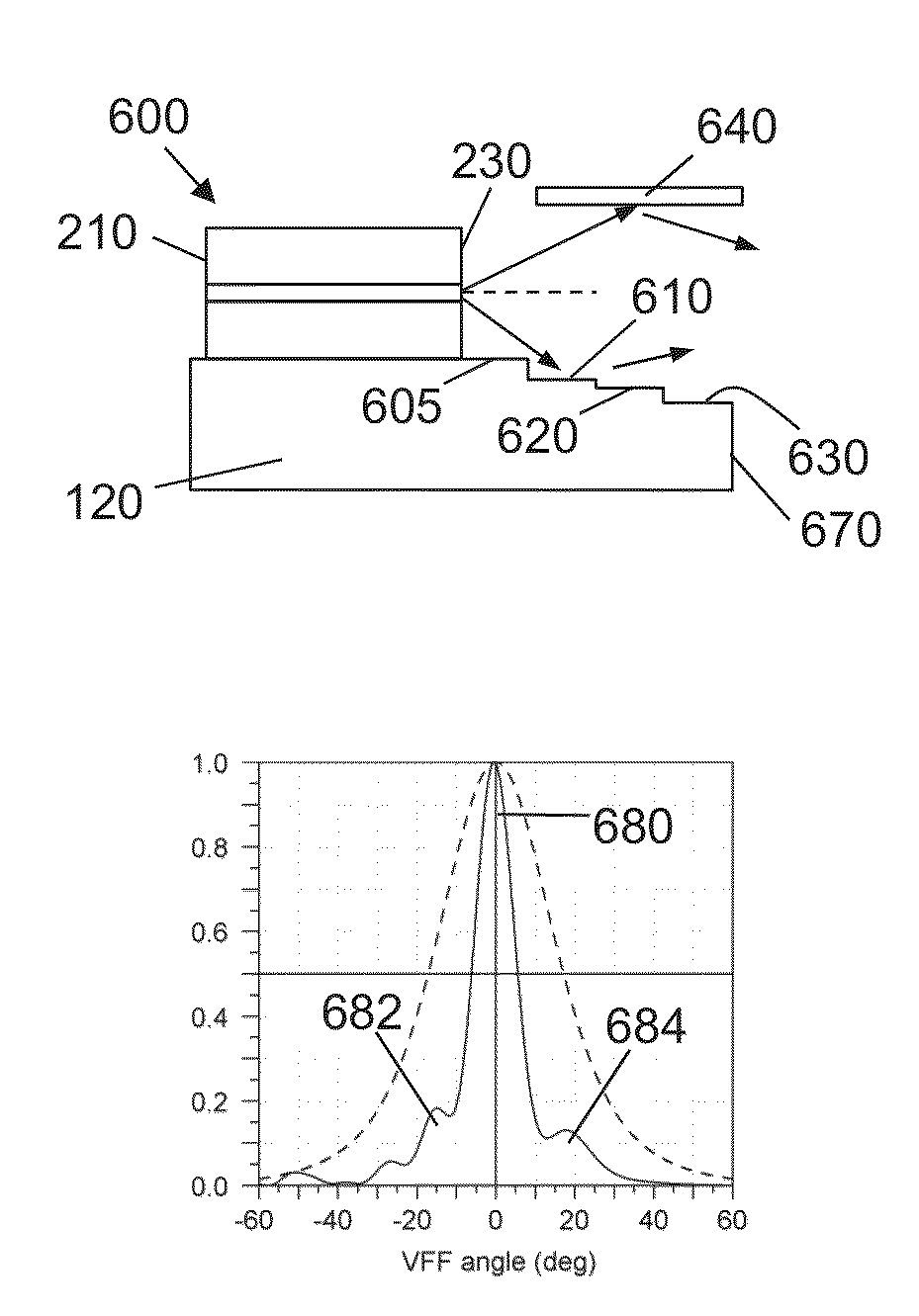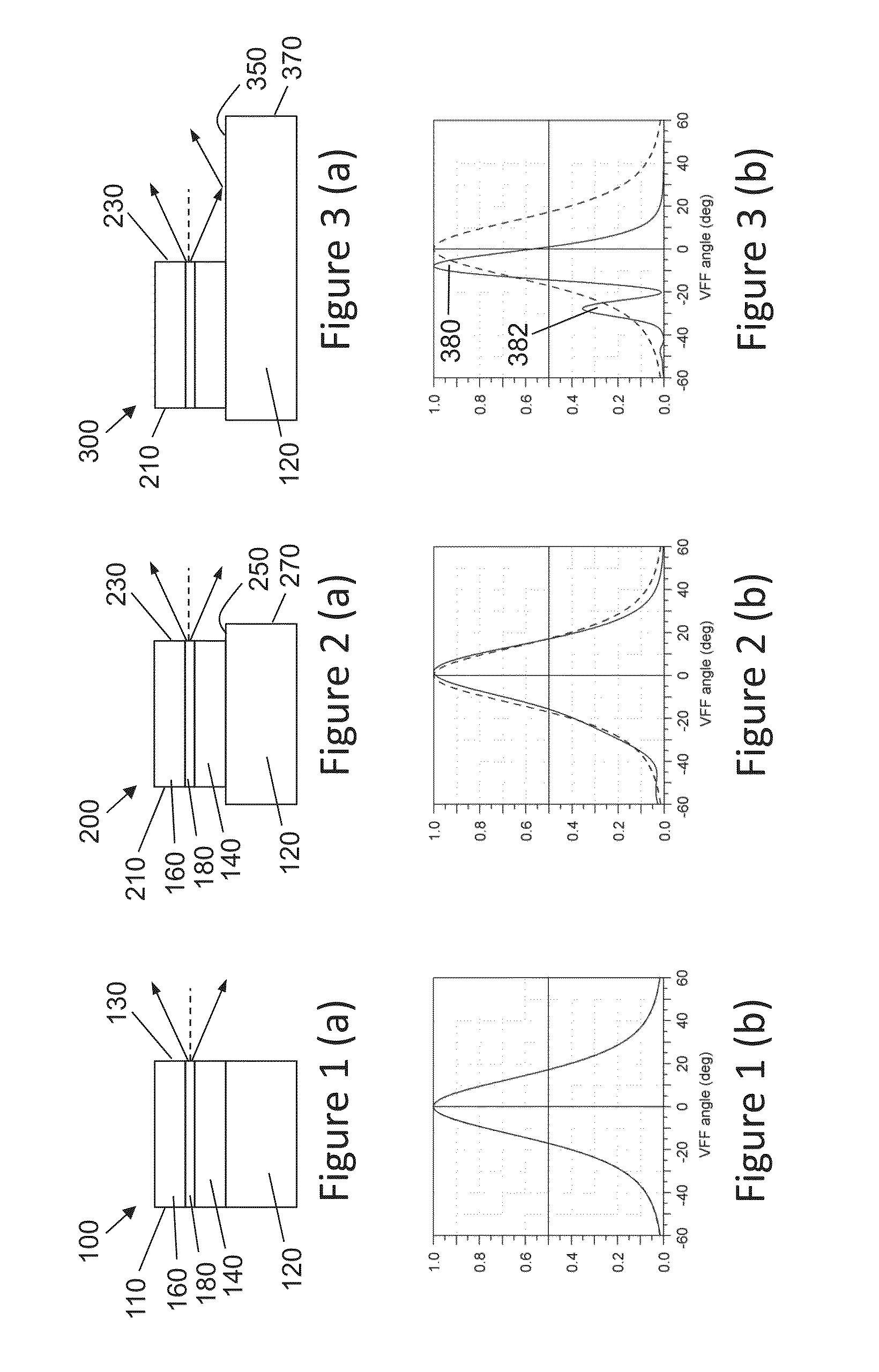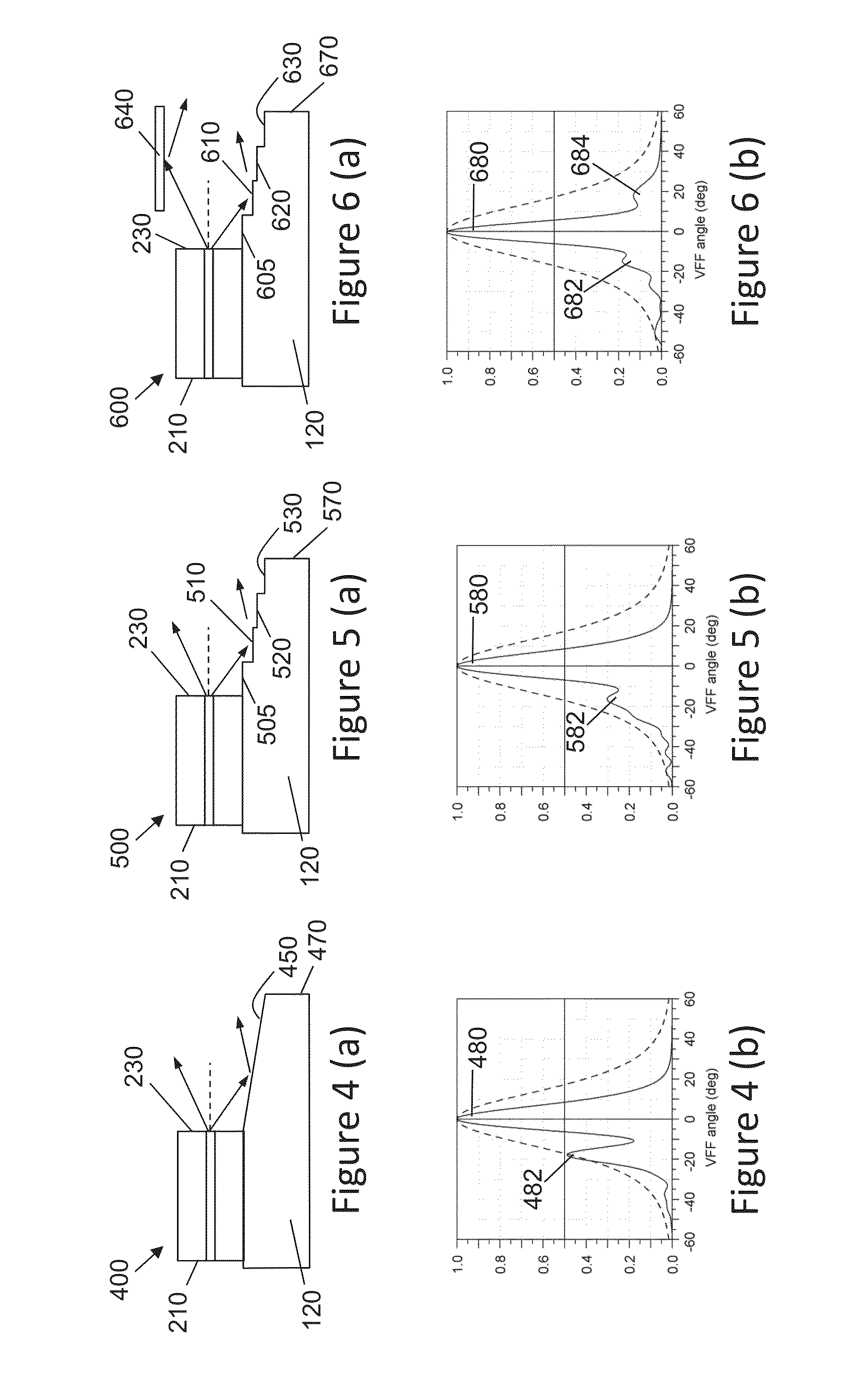Lasers with beam-shape modification
a technology of beam shape and laser, which is applied in the field of photonic devices, can solve the problems of laser characteristics degradation, process complexity and degradation of laser characteristics, and the inability of conventional lithographic techniques to be used to further process lasers
- Summary
- Abstract
- Description
- Claims
- Application Information
AI Technical Summary
Benefits of technology
Problems solved by technology
Method used
Image
Examples
Embodiment Construction
[0031]FIG. 1 (a) shows a semiconductor laser 100 formed through cleaving of the front 130 and back 110 facets. The laser structure comprises a substrate 120 with epitaxially deposited layers that allow the formation of a lower cladding layer 140, which may extend into the substrate or be completely epitaxially deposited as shown in FIG. 1 (a) and of thickness 1.83 μm, an active region 180 of 0.34 μm thickness, and an upper cladding layer 160 of 1.83 μm. The laser emits laser light at around 1310 nm. FIG. 1 (b) shows the vertical far-field (VFF) obtained through RSoft Finite-Difference Time-Domain (FDTD) simulations from either the front or back facet of the structure in FIG. 1 (a).
[0032]FIG. 2 (a) shows a cross-section of a semiconductor laser 200 formed through etching of the front 230 and back facets 210 at or close to perpendicular to the plane of the substrate 120, which is usually a deviation of the etched facet of up to 3° from the normal to the plane of the substrate. Example...
PUM
 Login to View More
Login to View More Abstract
Description
Claims
Application Information
 Login to View More
Login to View More - R&D
- Intellectual Property
- Life Sciences
- Materials
- Tech Scout
- Unparalleled Data Quality
- Higher Quality Content
- 60% Fewer Hallucinations
Browse by: Latest US Patents, China's latest patents, Technical Efficacy Thesaurus, Application Domain, Technology Topic, Popular Technical Reports.
© 2025 PatSnap. All rights reserved.Legal|Privacy policy|Modern Slavery Act Transparency Statement|Sitemap|About US| Contact US: help@patsnap.com



